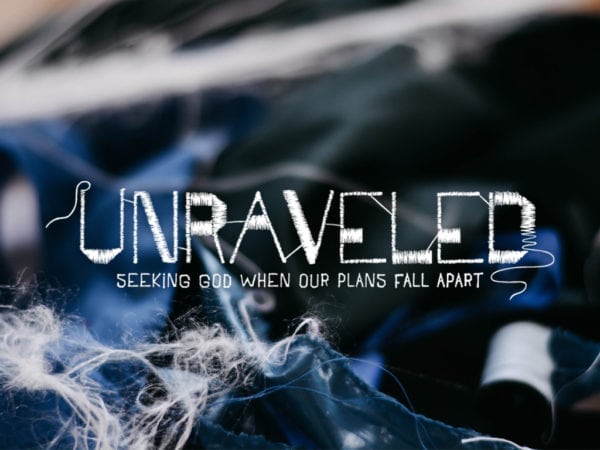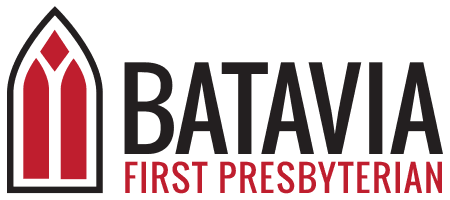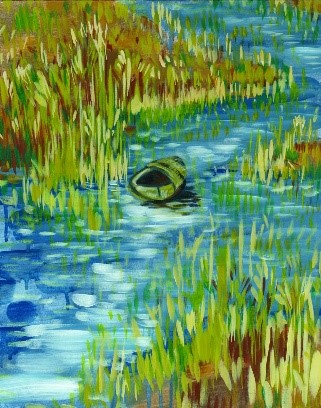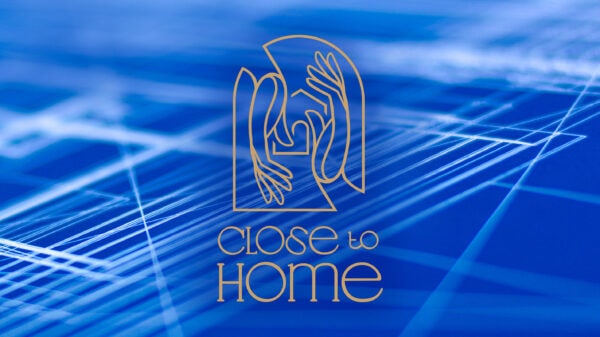“An Imperfect Ally” by Lisle Gwynn Garrity | A Sanctified Art LLC | sanctifiedart.org
Weekly Bible Devotional – July 26, 2020
“Unraveled: When Our Plans for Our Children Unravel”
As we read this story from Exodus 1 and 2, I find myself giving thanks for the wisdom, courage, and tenacity of a mother who did everything in her power to protect her child, even as it meant allowing her son to be adopted to protect his life. This was a time of great fear and oppression for the Israelites in Egypt. Not only were they enslaved there, the king saw them as a major threat and decided to commit infanticide against them to keep their numbers down. At first, he ordered the Egyptian midwives to kill the male babies they delivered. But when that didn’t work, he gave the order to have all male babies killed. Two women and a girl subverted the plan of Pharaoh and saved the life of one of the most important leaders in the history of the Israelites: Moses. The two adult women were Jochebed and Pharaoh’s daughter and the girl was Miriam who was about five years old. Pretty amazing to think that the salvation and delivery from slavery for the Israelites depended on the compassion, courage, and wisdom of these minor characters in history. But that is how God works! God often chooses those whom society often labels as weak to bring about God’s love and justice into the world. May the reflections below give you a renewed commitment to God’s “unconventional” ways of transformation.
Scripture for Sunday: Exodus 1:22, 2:1-10
Then Pharaoh commanded all his people, “Every boy that is born to the Hebrews you shall throw into the Nile, but you shall let every girl live.”
Now a man from the house of Levi went and married a Levite woman. 2 The woman conceived and bore a son; and when she saw that he was a fine baby, she hid him three months. 3 When she could hide him no longer she got a papyrus basket for him, and plastered it with bitumen and pitch; she put the child in it and placed it among the reeds on the bank of the river. 4 His sister stood at a distance, to see what would happen to him.
5 The daughter of Pharaoh came down to bathe at the river, while her attendants walked beside the river. She saw the basket among the reeds and sent her maid to bring it. 6 When she opened it, she saw the child. He was crying, and she took pity on him. “This must be one of the Hebrews’ children,” she said. 7 Then his sister said to Pharaoh’s daughter, “Shall I go and get you a nurse from the Hebrew women to nurse the child for you?” 8 Pharaoh’s daughter said to her, “Yes.” So the girl went and called the child’s mother. 9 Pharaoh’s daughter said to her, “Take this child and nurse it for me, and I will give you your wages.” So the woman took the child and nursed it. 10 When the child grew up, she brought him to Pharaoh’s daughter, and she took him as her son. She named him Moses, “because,” she said, “I drew him out of the water.”
Theme Connections:
Moses is born into a world of genocide, a world where his life should end just as swiftly as it had begun. But his mother and sister plot a plan for his survival, placing him in the river near Pharaoh’s daughter. Their plan succeeds, as Pharaoh’s daughter has mercy on the child and unknowingly returns him to his mother to be nursed. When Moses grows up, his mother returns him to Pharaoh’s daughter to be adopted. Moses’ mother unravels her hopes and dreams as a mother, enduring great sacrifice in order for her child to live. And yet, Pharaoh’s daughter unravels her own father’s plans by adopting Moses as her own.
WHAT HAS UNRAVELED AND/OR IS UNRAVELING?
• Moses’ mother’s hopes and dreams for her newborn child.
• Pharaoh’s plan to kill every Hebrew boy.
• Pharaoh’s daughter’s inherited prejudice against the Hebrews.
Guiding Questions:
-Imagine this story from each character’s perspective. What questions do you have regarding their actions in the narrative?
– Moses’ mother: Why could she hide him no longer when Moses was three months old? Was he getting too big, his cry too loud? Of all the ways to protect her child, why did she decide to place him in a basket in the Nile? Had she witnessed other babies slain or thrown into the river? Did she and Miriam choose to place Moses near the bathing quarters of Pharaoh’s daughter? What would make them believe Pharaoh’s daughter would pity a Hebrew baby? Had they heard or observed that Pharaoh’s daughter wanted a child of her own?
– Moses’ father: Where is he in the narrative? Did he not care about protecting his first-born son? Did he support or disagree with his wife’s approach for securing Moses’ survival?
– Miriam, Moses’ sister: Did she help plot Moses’ survival plan with her mother, or simply follow her orders? How long did she watch Moses drift along the river? Was she watching to make sure she landed in the arms of Pharaoh’s daughter, or someone willing to have mercy on him?
– Pharaoh’s daughter: Did she have any children of her own? Had she expressed a desire for a baby boy? What made her defy her father’s orders and have compassion on a Hebrew child? How did she convince her father to allow her to care for the child and ultimately adopt him as her son?
-Consider the role of vulnerability in this narrative. Moses’ mother’s vulnerability to Pharaoh’s commands forces her to hatch a desperate, creative plan. Moses’ vulnerability as a helpless child softens Pharaoh’s daughter’s heart. What role might vulnerability play in the midst of our unraveling?
-Analyze Pharaoh’s daughter’s role in the story. What does it look like to be an ally to those whose lives are unraveling due to systemic oppression?
Quote for Inspiration:
“In this volume I call the princess who nurtures Moses Sheshan (the Egyptian word for lotus); she appears only in Exodus 2:5-10. The story does not tell us how old she is, if she is married or single, if she has other children or is infertile, if she has siblings, or if she was the firstborn of the pharaoh struck down in the plague. Her entrance and immediate exit from the text leave many questions: What was her relationship with her father like? Did he know that she was fostering a Hebrew child? Did she publicly differ with her father on his treatment of the Hebrew women, men, and their children? Was she a beloved and indulged daughter? Or was she one of so many children by so many women that he could not keep them straight? I read Sheshan as an ally of the Hebrew people. In contemporary antioppression work and discourse, an ally is a person who uses his or her privilege to work for justice on behalf of oppressed people.”
—Wilda C. Gafney. Womanist Midrash: A Reintroduction to the Women of the Torah and the Throne.
From the artist // Lisle Gwynn Garrity:
Moses’ mother and Miriam plot a clever plan, but it’s far from foolproof. The risks far outweigh their chances for success. What if the basket they place him in leaks, drowning him instead of keeping baby Moses afloat? What if the current gets too strong, or the winds pick up, or he gets stuck in a tangle of reeds? What if the wrong person finds him and fulfills Pharaoh’s command? What if Pharaoh’s daughter is moved with disgust when she sees what floats into her private bathing quarters? Even if Pharaoh’s daughter decides to keep the child as her own, what will keep Pharaoh from killing Moses when she’s not looking?
Their plan is too perilous, too fraught with danger for any infant to endure. And yet, we know of mothers who risk desert heat, fatigue, illness, dehydration, criminalized border crossings, and facilities with cages to pursue the slight chance—the mere hope—of survival for their child. Why would they do this? Because to stay home and succumb to the sure threats of genocide—or gang violence, or civil war—is far more dangerous.
In this image, I gave the viewer the vantage point Pharaoh’s daughter might have had. What melts her heart with mercy when she sees this Hebrew child float downstream? Was a well of rebellion rising up within her, making her eager to subvert her father’s orders? Was she poisoned like most Egyptians with bias against the Israelites, but did the innocence and vulnerability of an infant shift her heart toward love? Had she desperately wanted a child of her own? Regardless of her motives, Pharaoh’s daughter uses her power and privilege to act as an ally to Moses and his family in their worst unraveling. It’s not a perfect solution, but God doesn’t need perfection to achieve liberation.
Look:
Take a few moments to gaze upon the artwork. Breathe deeply in quiet meditation as you observe the visual qualities of what you see: color, line, texture, movement, shape, form. Now take a deeper look. What parts of the image are your eyes most drawn to? What parts of the image did you overlook? Now engage your imagination. If you were to place yourself in this scene, where would you be and how would you interact with what surrounds you?
Reflect:
– What has unraveled and/or is unraveling in this story?
– Imagine this story from the perspective of each character—Pharaoh, Moses’ mother, Miriam, Pharaoh’s daughter. Why does each character do what s/he does?
– What causes Pharaoh’s daughter’s heart to soften when she finds Moses in the river? Why does she choose to nurture and adopt Moses as her own? What can we learn from her actions?
Write:
Consider the role of Pharaoh’s daughter in this story. In your own life, what does it look like to be an ally to those whose lives are unraveling due to systemic oppression? An ally is someone who uses their power, privilege, and resources to work for justice alongside those who are oppressed. Be specific about ways you can serve as an ally.
Pray:
When necessary, unravel my attachment to power so that I can walk with others in the journey toward freedom. Amen.



